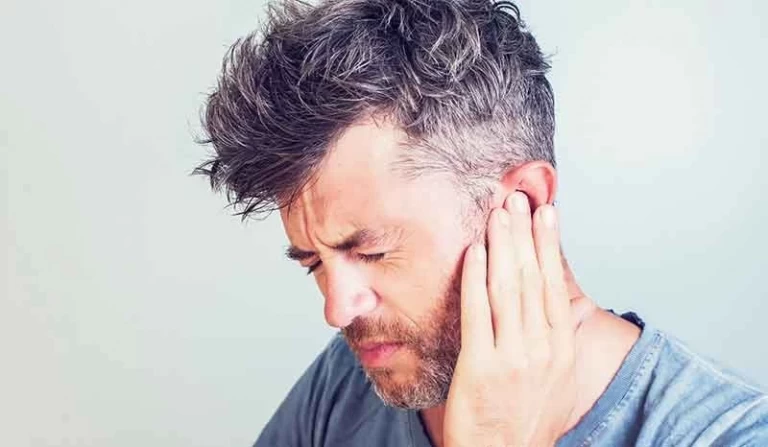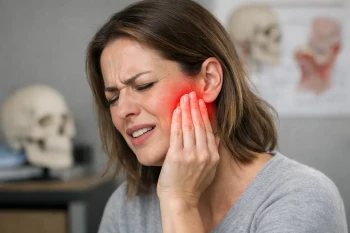
If ringing in your ears is driving you crazy, you’re experiencing tinnitus symptoms. Often tinnitus (pronounced “tin-night-us”) affects one or both ears and precedes hearing loss. There are many conditions that can produce tinnitus symptoms, and understanding the unique factors underlying your condition is essential for appropriate treatment.
What is tinnitus?
Tinnitus is a hearing condition that results in a high-pitched ringing sound in one or both ears. Tinnitus symptoms range from the occasional ring when quiet to constant debilitating ringing. Many individuals suffering with tinnitus use white noise devices or sleep with the television on to drown out the sound in their ears to get a good night’s sleep.
Depending on your history of noise exposure and trauma the treatment options for tinnitus vary. Tinnitus symptoms can exist alone or in combination with other conditions such as Meniere’s Disease, otosclerosis, or progressive hearing loss.
There are commonalities among individuals experiencing tinnitus symptoms that help to evaluate effective treatment options including:
- History of loud noise exposure (concerts, power tools/machinery, etc)
- Cervical spine (neck) trauma such as whiplash, sports injury, concussion, etc.
What causes tinnitus?
Often these risk factors occur in combination. Loud noise exposure damages the delicate hair-like sensors in the ear that transmit sound waves into nerve impulses to be interpreted in the brain. This one cause of conduction deafness.
Sensorineural hearing loss involves damage or interference to the normal nerve circuits involved in the hearing process and can be the missing link in understanding how neck trauma produces secondary conditions such as tinnitus symptoms.
Sound waves enter the outer ear and produce vibration of the ear drum at varying frequencies depending on the pitch of the sound. Higher pitched sounds vibrate more rapidly than lower pitched sounds. These vibrations contain the “raw data” to be interpreted by the brain in order to differentiate between a child’s laugh and a dog’s bark, for example.
Transmission of sound waves through the ear is important for both hearing and understanding tinnitus symptoms, but the main primary mechanism behind hearing and the onset of ringing in the ears involves the nervous system of the body.
How the nervous system controls hearing
The nervous system is the electrical communication system of the body and serves as both the hard-wiring and processing center of all bodily function.
The main components of the nerve system are the brain itself, it’s continuation at the brainstem, and the spinal cord and its 32 paired nerves. Hearing involves the brain, brainstem, and a very important cranial nerve (nerve that exits at the base of the skull).
Tinnitus symptoms can be an unfortunate side-effect of nervous system irritation, especially when the brainstem and cranial nerve tissues become involved.
In the same way that a short-circuited wire may produce negative side effects in the home (outlets that don’t work, fuses that continue to blow, and the risk of fire or other damage), short-circuited nerve pathways in the body have noticeable side effects (symptoms).
Tinnitus symptoms, including high pitched ringing in the ears, are also side effects of an underlying cause in the nerve circuit of hearing.
What does the neck have to do with tinnitus symptoms?
As we discussed earlier, there are delicate nerve pathways that become irritated to produce tinnitus symptoms. The upper cervical spine (upper neck) is the region of the spine responsible for protecting and supporting these nerve tissues.
As the most movable portion of the spine, the upper neck is susceptible to injury when the spine experiences high-stress environments. Several examples of high stress environments that may injure the upper neck include:
- Whiplash or car accidents
- Sports injuries or concussions
- Slips and falls
…and more.
When these types of stresses to the spine overwhelm its structural integrity, an upper cervical subluxation may be produced. Upper cervical subluxation is a term that refers the injury involving abnormal mechanics of the upper spine as well as the nerve irritation that it causes.
These injuries are usually subtle at first and may not produce any symptoms. However, if left uncorrected over time the wear-and-tear associated with upper cervical subluxation is likely to produce a variety of secondary conditions. Tinnitus symptoms fall into the category of common secondary conditions seen with upper cervical subluxation.
How does addressing upper cervical subluxation affect tinnitus symptoms?
Qualified upper cervical doctors are uniquely trained to detect and correct upper cervical subluxations, and deal with patients experiencing tinnitus symptoms on a routine basis.
By addressing the structural issues underlying nerve irritation in the head and neck region, upper cervical doctors can help provide a safe and effective solution for tinnitus symptoms.
By using state of the art testing, diagnostic imaging, and a targeted and individualized treatment plan, upper cervical doctors help patients find lasting relief without having to twist, pop, or crack the neck.
How do I find a qualified upper cervical doctor near me?
The Blair Upper Cervical Chiropractic Society educates, trains, and certifies upper cervical doctors all around the world. The request a complimentary consultation with a Blair Upper Cervical doctor, simply visit “Locate a Doctor” page.






Leave a comment